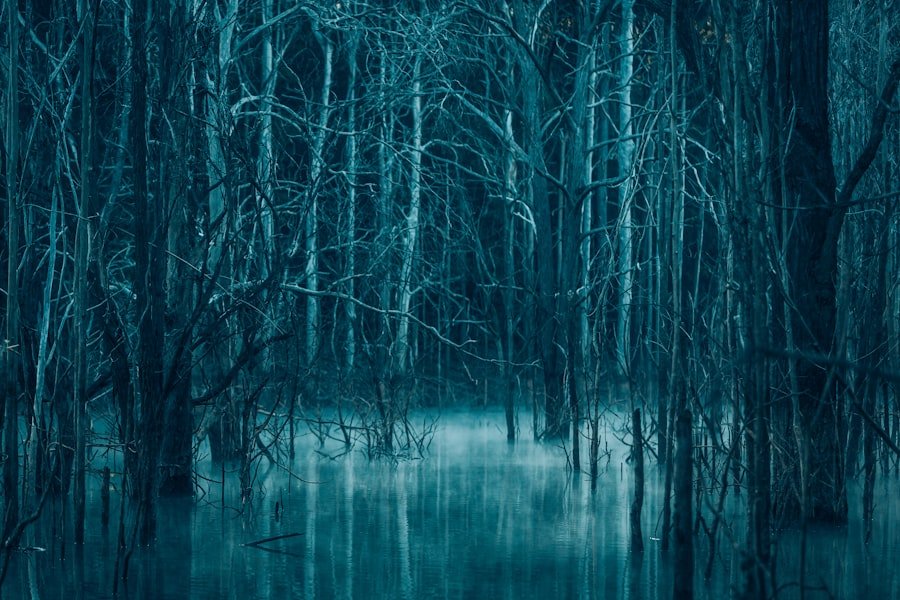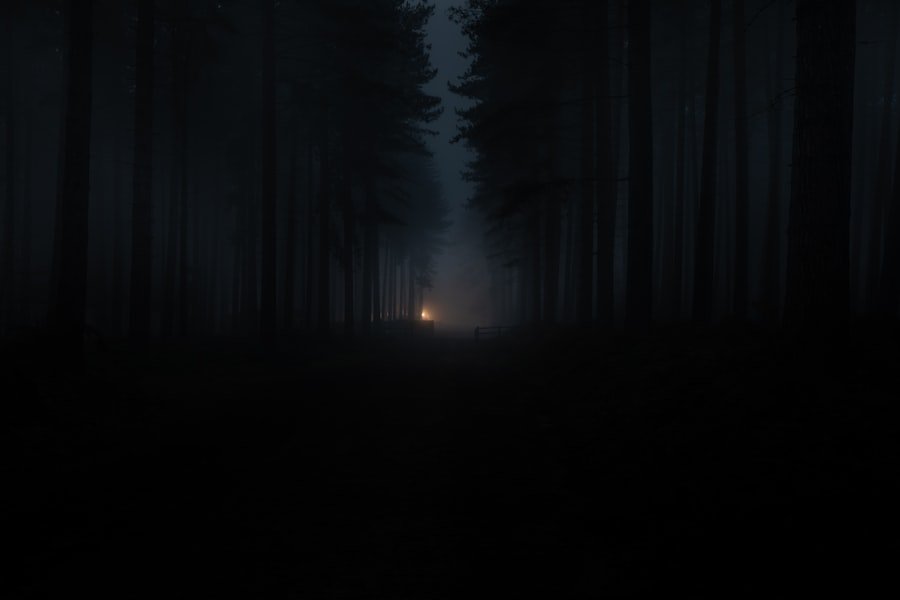Now Reading: Unveiling the Narrative-First Survival Horror Wave
-
01
Unveiling the Narrative-First Survival Horror Wave
Unveiling the Narrative-First Survival Horror Wave

As I reflect on the evolution of survival horror games, I can’t help but notice a significant shift towards narrative-first experiences. In the early days of the genre, gameplay mechanics often took precedence over storytelling. However, as technology advanced and player expectations evolved, developers began to recognize the power of a compelling narrative.
This shift has led to the emergence of games that prioritize storytelling, creating immersive worlds where players are not just surviving but also engaging with rich narratives that evoke deep emotional responses. The rise of narrative-first survival horror can be attributed to several factors. One of the most significant is the growing demand for more meaningful experiences in gaming.
Players are no longer satisfied with mere jump scares or mindless combat; they crave stories that resonate with them on a personal level. This desire has prompted developers to craft intricate plots, complex characters, and immersive settings that draw players into the heart of the horror. As a result, games like “The Last of Us” and “Resident Evil 7” have redefined what it means to experience fear, intertwining gameplay with storytelling in ways that leave a lasting impact.
Key Takeaways
- Narrative-first approach has become increasingly popular in survival horror games, focusing on storytelling as a key element.
- Modern horror games emphasize the importance of storytelling to create immersive and engaging experiences for players.
- Character-driven horror experiences have evolved to provide deeper and more compelling narratives for players to engage with.
- The narrative-first approach has a significant impact on player immersion, drawing them into the game’s world and story.
- Psychological horror is explored in narrative-first games, delving into the depths of the human psyche to create a truly terrifying experience for players.
Emphasis on Storytelling in Modern Horror Games
The Power of Emotional Investment
The stories told in these games often explore themes of loss, betrayal, and the human condition, allowing players to form a deeper connection with characters. This emotional investment transforms the act of survival into something more profound, as players navigate through terrifying scenarios while grappling with the characters’ struggles.
Innovative Narrative Techniques
The emphasis on storytelling has led to innovative narrative techniques that enhance player engagement. Many modern horror games utilize environmental storytelling, where the world itself tells a story through its design and details. This approach not only enriches the narrative but also encourages players to immerse themselves fully in the game world, making every corner feel alive with history and emotion.
Immersive Game Worlds
I recall exploring the hauntingly beautiful landscapes of “Silent Hill” and discovering clues about the characters’ pasts hidden within the environment. This approach creates a sense of depth and history, making the game world feel more realistic and engaging. As players delve deeper into the world, they become an active participant in the story, uncovering secrets and piecing together the narrative.
Evolution of Character-driven Horror Experiences

As I delve deeper into the realm of narrative-first survival horror, I can’t overlook the evolution of character-driven experiences. In earlier titles, protagonists often felt like mere vessels for gameplay mechanics rather than fully realized individuals. However, recent games have shifted this paradigm by focusing on character development and emotional arcs.
I find myself drawn to characters who are flawed, relatable, and complex, as their journeys resonate with my own experiences and fears. This evolution has given rise to memorable characters who face not only external threats but also internal struggles. In games like Amnesia: The Dark Descent, I am not just running from monsters; I am also grappling with the protagonist’s haunting memories and psychological turmoil.
This duality creates a richer narrative experience, as I become invested in their survival not just for gameplay’s sake but because I care about their fate. The depth of character development in modern horror games has transformed them into powerful narratives that linger long after the credits roll.
Impact of Narrative-First Approach on Player Immersion
The narrative-first approach in survival horror has profoundly impacted player immersion, drawing me into worlds that feel both terrifying and authentic. When a game prioritizes storytelling, it creates an emotional connection that enhances my overall experience. I find myself fully engaged in the plot, often forgetting that I am merely a player controlling a character on-screen.
The stakes feel real, and every decision I make carries weight, heightening my sense of involvement in the unfolding drama. This immersion is further amplified by the use of atmospheric elements such as sound design, visual aesthetics, and pacing. In games like “Outlast,” the chilling soundscapes and dimly lit environments work in tandem with the narrative to create an overwhelming sense of dread.
As I navigate through dark hallways and encounter horrifying creatures, I am not just playing a game; I am living a nightmare. The combination of narrative depth and immersive design allows me to experience fear in a way that transcends traditional gaming boundaries.
Exploration of Psychological Horror in Narrative-First Games
One of the most compelling aspects of narrative-first survival horror is its exploration of psychological horror. Unlike traditional horror that relies heavily on external threats, psychological horror delves into the mind’s darkest corners, challenging my perceptions of reality. Games like “Soma” and “Layers of Fear” exemplify this approach by crafting narratives that blur the lines between sanity and madness.
As I navigate these twisted tales, I am forced to confront my own fears and insecurities, making for an unsettling yet thought-provoking experience. The psychological elements in these games often manifest through unreliable narrators or surreal environments that reflect the characters’ mental states. I find myself questioning what is real and what is merely a product of a fractured psyche.
This ambiguity adds layers to the narrative, inviting me to piece together clues while grappling with my own interpretations. The result is a deeply immersive experience that lingers long after I’ve put down the controller, leaving me pondering the nature of fear and reality itself.
Integration of Player Choice and Consequences in Survival Horror

The Weight of Decision-Making
Games like “Until Dawn” exemplify this trend by presenting players with choices that can lead to life or death scenarios for their characters. Each decision carries significant weight, forcing me to consider not only my immediate survival but also the long-term consequences of my actions. This dynamic creates a sense of tension and urgency as I weigh my options carefully, knowing that even seemingly minor choices can have far-reaching effects on the narrative’s trajectory.
A Sense of Tension and Urgency
The pressure to make the right decision is palpable, as I navigate the complex web of choices and consequences. This sense of tension and urgency is a hallmark of modern survival horror games, keeping me on the edge of my seat as I struggle to make difficult decisions.
From Passive to Active Participation
The incorporation of player choice and consequences has revolutionized the survival horror genre, transforming my experience from passive observation to active participation. By giving me a sense of agency and control, these games create a more immersive and engaging experience, drawing me deeper into the world and its characters.
Importance of Atmosphere and World-building in Narrative-First Horror
Atmosphere and world-building play crucial roles in enhancing the narrative-first approach to survival horror. As I immerse myself in these meticulously crafted environments, I am struck by how every detail contributes to the overall story being told. From crumbling buildings to eerie soundscapes, each element serves to heighten my sense of dread and anticipation.
The world-building in modern horror games often reflects themes central to the narrative, creating a cohesive experience that draws me deeper into the story. In “Resident Evil Village,” for instance, the gothic architecture and haunting landscapes mirror the protagonist’s struggle against overwhelming odds. As I explore these environments, I feel as though I am uncovering layers of history and emotion that enrich my understanding of the characters’ journeys.
This attention to detail transforms the game world into a living entity that enhances both immersion and storytelling.
Role of Pacing and Tension in Narrative-First Survival Horror
Pacing is another critical aspect that shapes my experience in narrative-first survival horror games. The careful balance between moments of tension and respite creates an ebb and flow that keeps me engaged throughout the journey. Developers have mastered the art of pacing, knowing when to ramp up the tension with heart-pounding encounters and when to allow for quieter moments of reflection.
In games like “The Evil Within,” I find myself on edge during intense sequences filled with relentless enemies while simultaneously appreciating quieter moments that allow for character development and world exploration. This deliberate pacing enhances my emotional investment in the story, as I become more attuned to the characters’ struggles and triumphs. The tension builds gradually, creating an atmosphere where every sound feels amplified, heightening my sense of fear as I navigate through both physical and psychological challenges.
Incorporating Themes of Isolation and Despair in Narrative-First Games
Themes of isolation and despair are prevalent in many narrative-first survival horror games, resonating deeply with my own experiences and emotions. These themes serve as powerful catalysts for storytelling, allowing developers to explore the human condition in profound ways. As I traverse desolate landscapes or navigate abandoned buildings, I often feel a sense of loneliness that mirrors the characters’ struggles.
In games like “Silent Hill 2,” isolation becomes a character in its own right, shaping not only the environment but also the protagonist’s psyche. The oppressive atmosphere amplifies feelings of despair as I confront both external threats and internal demons. This exploration of isolation forces me to confront uncomfortable truths about fear and vulnerability while simultaneously drawing me closer to the characters’ journeys.
The Influence of Cinematic Storytelling in Modern Horror Gaming
Cinematic storytelling has had a profound influence on modern horror gaming, elevating narratives to new heights through visual storytelling techniques borrowed from film. As I engage with these narratives, I am often struck by how cinematic elements enhance my emotional connection to the story. From expertly crafted cutscenes to dynamic camera angles, these techniques create a sense of immersion that draws me into the heart of the action.
Games like “The Last of Us Part II” exemplify this trend by blending gameplay with cinematic storytelling seamlessly. The emotional weight carried by each scene is palpable as I witness characters grapple with loss and moral dilemmas in beautifully rendered environments. This fusion of gameplay and cinematic elements allows me to experience horror not just as a series of events but as an emotional journey that resonates long after I’ve finished playing.
Future Trends and Innovations in Narrative-First Survival Horror
As I look ahead to the future of narrative-first survival horror, I am excited about the potential for innovation within this genre. With advancements in technology such as virtual reality and artificial intelligence, developers have new tools at their disposal to create even more immersive experiences. Imagine stepping into a world where every choice feels weighty and every interaction is influenced by AI-driven characters who respond dynamically to my actions.
Additionally, as storytelling continues to evolve within gaming, I anticipate more diverse narratives that explore underrepresented voices and perspectives within horror. This shift could lead to fresh interpretations of fear that challenge traditional tropes while offering new insights into human psychology and societal issues. The future holds endless possibilities for narrative-first survival horror games, promising experiences that will continue to captivate players like myself for years to come.
In conclusion, as I reflect on my journey through narrative-first survival horror games, it becomes clear how integral storytelling has become within this genre. From character-driven experiences to immersive atmospheres and psychological explorations, these games have redefined what it means to experience fear in gaming. As technology advances and narratives continue to evolve, I eagerly await what lies ahead in this captivating realm where fear meets storytelling.
If you’re interested in exploring more upcoming game releases, be sure to check out this article for all the latest information on highly anticipated titles. You may also enjoy watching some of the top game trailers that have left a lasting impact by visiting this link. And for those who are looking to embrace their dark side, delve into the world of truly evil games with this insightful article.



























